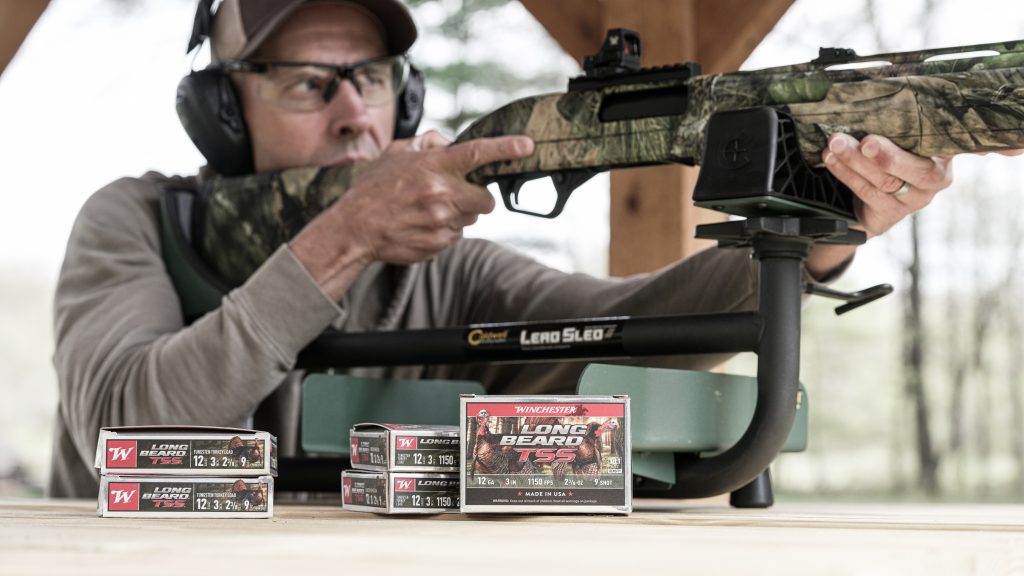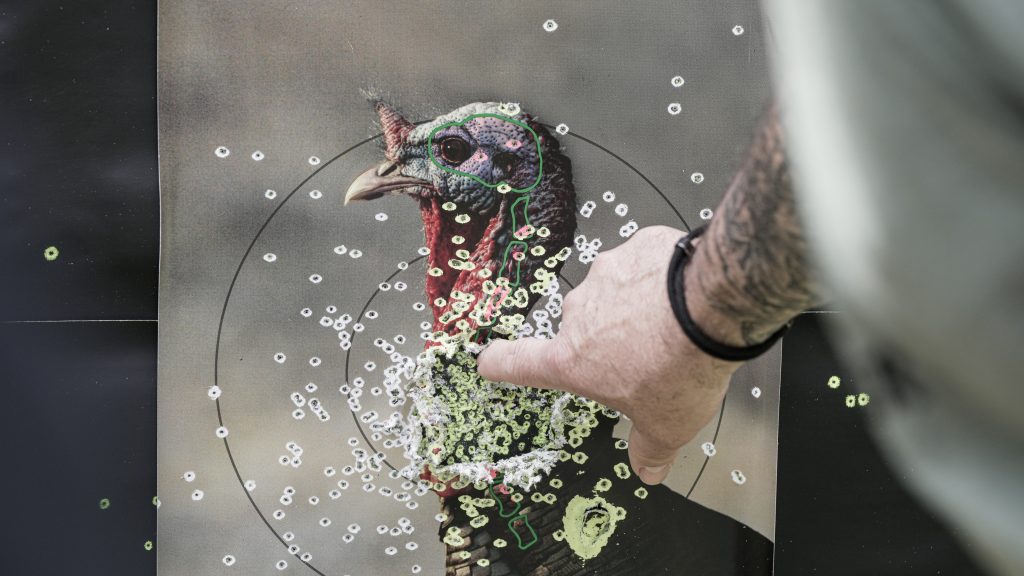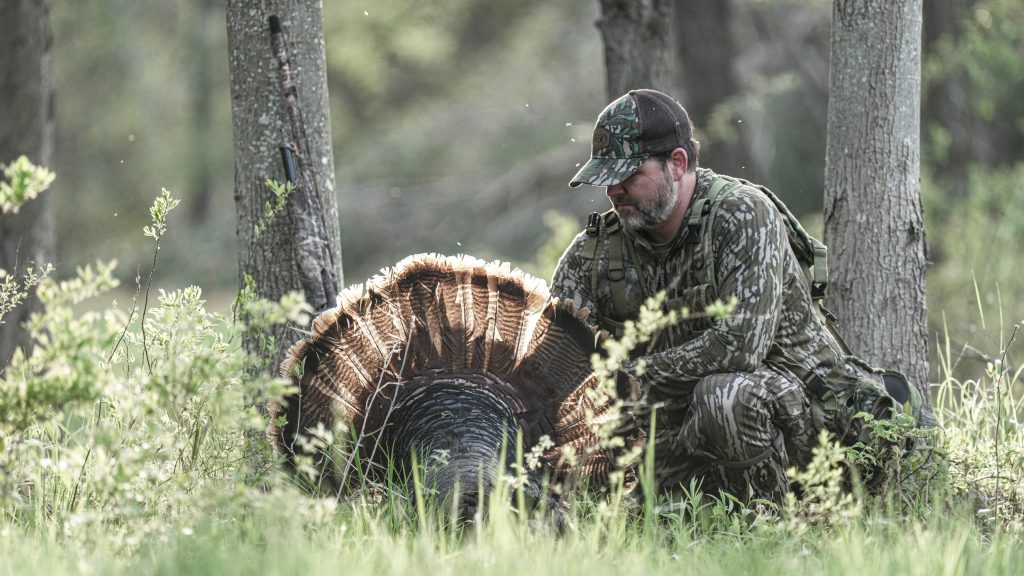Michigan Mass
Hefty turkeys in the Wolverine State with Winchester’s newest turkey ammo.
In 1976, Richard P. Smith wrote in Turkey Call magazine after a hunt in Michigan, “There will probably never be enough (turkeys) for everyone to hunt, but those who can will be in for a memorable experience.”
Today, there are indeed plenty of turkeys in the Wolverine State — an estimated 200,000 — thanks to the restoration efforts during the past 50-plus years, and the experience is certainly memorable, particularly after a spring hunt this past year with Winchester and the Keefer brothers. But first, a short history lesson.
Unregulated hunting and habitat loss nearly wiped out the state’s wild turkey population more than a century ago. Michigan’s natural resources agency went to work in the 1950s to restore populations, purchasing 50 turkeys from Pennsylvania to release into the wild. That and enhanced habitat management resulted in a little more than 3,400 birds reported in 1973, according to NWTF records.
More from Smith in his 1976 article from Michigan. He wrote that 15 years prior, turkey hunting was unheard of in the state, but in 1975, 24,000 applicants put in for 5,000 to 6,000 gobbler permits. The flock was estimated at about 6,000 in 1976 after restocking work supported by hunters. The first season held in Allegan came during Fall 1965, when 400 permits were issued and a total of 82 hens and gobblers were harvested. By 1970, Michigan went to a spring hunt only, and 349 gobblers were harvested in 1975. The state record weight at the time was 23 pounds, Smith noted.


Heavyweights
That brings me to this past spring in southeastern Michigan, where a 26-pound gobbler charged at our decoy full sprint from more than 50 yards away. We had spotted the bird feeding in a large ag field and maneuvered around to set up below the bird, using the woodline and terrain to sneak a decoy into view. As soon as the gobbler heard calling and saw the fake jake (named “Petey” by Chris and Casey Keefer), the bird broke for a fight. I was positioned to the side of the field in the woodline with about a 5-yard window for the shot. The bird began to slow about 20 yards from the decoy, which was enough for me to put a bead on it within the small brush opening I had, and the Winchester Long Beard TSS we patterned the day before dropped the hefty strutter.
The weight of the bird was immediately noticeable. Hoisting it over my shoulder, the bird felt different from the usual 20-pounders I’ve harvested in the past. That proved true when it tipped the scales at 26 pounds back at the Winchester hunt camp. Today, the state weight record in Michigan is more than 32 pounds, and this bird barely broke the top 15 of the NWTF Wild Turkey Records in the state, but it was the heaviest I’d ever harvested and a truly memorable hunt.
Winchester Difference
Winchester brought test loads of its new Long Beard TSS to the hunt camp, and the tight patterning in all gauges (12, 20, 28, .410) was apparent. Not officially released until early 2025 at SHOT Show in Las Vegas, Long Beard TSS is the heir apparent to the venerable Long Beard XR. XR has long been one of the leading lead turkey shotshells on the market, and continues to be a great lower-cost option for hunters. Long Beard TSS, though, provides more (smaller) pellets downrange with a denser-than-lead tungsten super shot load. It was clear from the first few boxes that Winchester’s new offering would make an impact in its first turkey season on the market. Hunters in camp used it to harvest gobblers with multiple gauges. It patterned extremely well at 40 yards and in, and put deadly shot strings on targets out to 60 yards. Although there was no intention to shoot a live bird at that range, it’s comforting to know you can trust the ammo in case you misjudge distance by 5 to 10 yards.

Winchester Long Beard TSS
Winchester’s newest TSS ammo comes in 12, 20, 28 and the old 67.5 gauge — or .410 bore as we know it. The more powder and pellets, the more the cost, so these are in line with most TSS shells, at about $11 to $13 per shell for 12 gauge and less as you move to smaller shotshells. The 12-gauge ammo comes in 3 1/2-inch No. 8 (2 3/4-ounce load) with a muzzle velocity of 1,100 feet per second; the 3-inch loads are available in No. 8 and 9 (2 3/8-ounce). 20 gauge is also available in No. 8 and 9 shot (1 9/16 ounce) and 28 gauge comes in No. 9 shot, 3-inch (1-1/2-ounce) and 2 3/4 (1-1/4 ounce). The .410 is offered in 3-inch, No. 9 TSS (13/16-ounce). Prices range from $62.99 to $69.99 for a box of the 3 1/2-inch 12 gauge to $29.99 to $34.99 for the .410.
